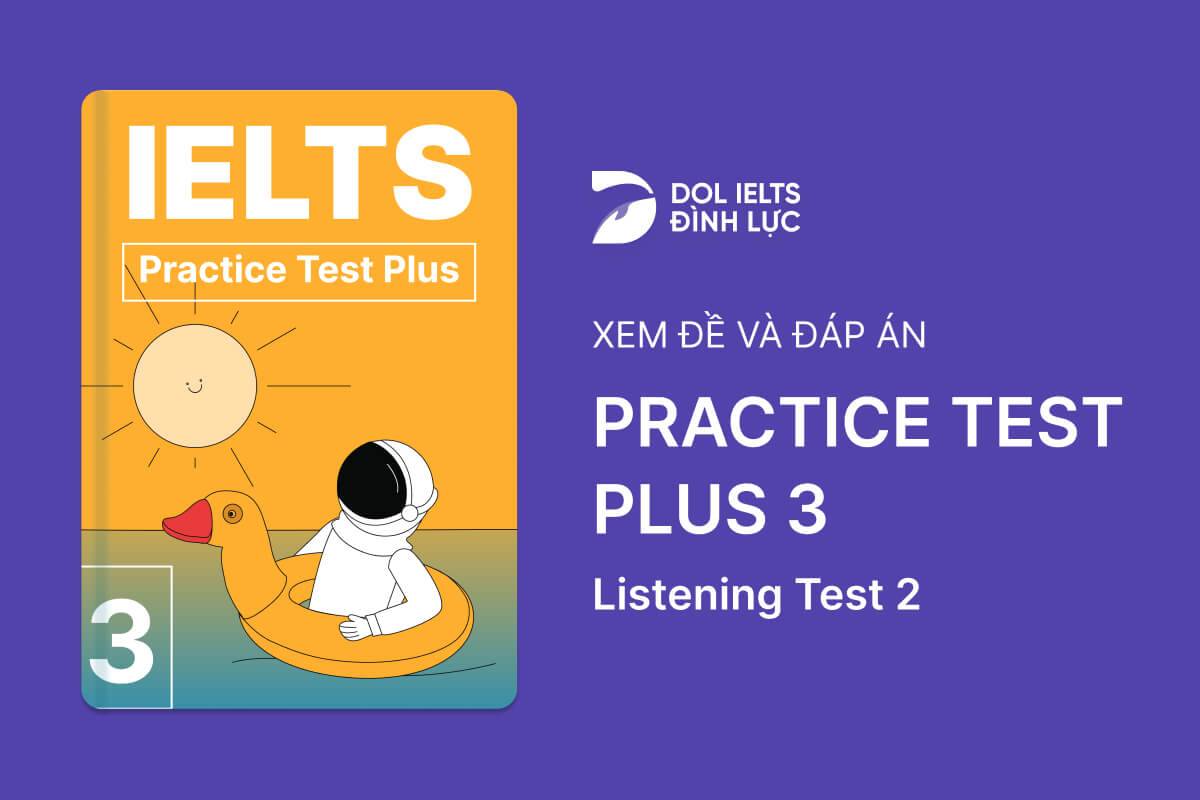Đề thi IELTS Online Test Practice Test Plus 3 - Listening Test 2 - Download PDF Câu hỏi, Transcript và Đáp án
Luyện tập đề IELTS Online Test Practice Test Plus 3 - Listening Test 2 được lấy từ cuốn sách Practice Test Plus 3 với trải nghiệm thi IELTS trên máy và giải thích đáp án chi tiết bằng Linearthinking, kèm answer key và list từ vựng IELTS cần học trong bài đọc.
Section
👂️ Bài nghe section 1
❓ Tapescript section 1
🔥 Đáp án & giải thích section 1
Giải thích chi tiết
 Đáp án cần điền là tên riêng (Jane ....)
Đáp án cần điền là tên riêng (Jane ....)
=> Biết đáp án sắp tới khi nghe "starting with your name"
 Nghe thấy tên được đánh vần ra L-A-double M-E-R-T-O-N
Nghe thấy tên được đánh vần ra L-A-double M-E-R-T-O-N
Người phụ nữ chỉnh lại là "There's only one M in it"
=> Đáp án: Lamerton 
Section
👂️ Bài nghe section 2
❓ Tapescript section 2
🔥 Đáp án & giải thích section 2
Giải thích chi tiết
 Mình cần nghe xem Tamerton Centre được lập nên để encourage mọi người làm gì
Mình cần nghe xem Tamerton Centre được lập nên để encourage mọi người làm gì
=> Đáp án sẽ tới sau "...why Tamerton was set up"
 Nghe thấy "That was really before all the concern with preserving the environment"
Nghe thấy "That was really before all the concern with preserving the environment"
=> Trước khi mọi người bắt đầu quan tâm tới việc bảo vệ môi trường
=> Tức là mục đích thành lập không phải là vì môi trường
=> Loại đáp án B 
 Nghe tiếp thấy "The idea was simply to get people out of the cities and into the country and to find out that just being outdoors can be very rewarding"
Nghe tiếp thấy "The idea was simply to get people out of the cities and into the country and to find out that just being outdoors can be very rewarding"
=> Mục đích là để cho mọi người tới vùng countryside và nhận ra rằng ở đây ngoài trời cũng rất tốt
=> Mục đích là khuyến khích mọi người tận hưởng cuộc sống vùng quê
=> Đáp án là A 
Section
👂️ Bài nghe section 3


❓ Tapescript section 3
🔥 Đáp án & giải thích section 3
Giải thích chi tiết
 Nghe thấy "the small container on the left is where you put the waste you've collected"
Nghe thấy "the small container on the left is where you put the waste you've collected"
=> Đang nói tới container để đựng rác thải (waste)
=> Xác định được small container on the left là C chứ không phải B, do B đang chỉ cụ thể vào chất lỏng bên trong chứ không phải là container
=>Đáp án là C 
Section
👂️ Bài nghe section 4
Taking in oxygen: mammals - lungs; fish - gills
Long-held dreams - humans swimming underwater without oxygen tanks
Oxygen tanks considered too
and large31
Attempts to extract oxygen directly from water
1960s - prediction that humans would have gills added by
32
Ideas for artificial gills were inspired by research on
fish gills
fish swim bladders
animals without gills - especially bubbles used by
33
Make a watertight box of a materiaI which lets
pass through34
Fill with air and submerge in water Important that the diver and the water keep
35
The gill has to have a large
36
Designers often use a network of small
on their gill37
Main limitation - problems caused by increased
in deeper water38
Supplying oxygen for use on
39
Powering
cells for driving machinery underwater40
❓ Tapescript section 4
🔥 Đáp án & giải thích section 4
Giải thích chi tiết
 Mình cần nghe xem Oxygen tank quá large và gì (Oxygen tanks considered too .... and large)
Mình cần nghe xem Oxygen tank quá large và gì (Oxygen tanks considered too .... and large)
=> Biết đáp án sắp tới khi nghe "breathing without the help of oxygen tanks"
 Nghe thấy "it's generally agreed that tanks are too heavy and big"
Nghe thấy "it's generally agreed that tanks are too heavy and big"
=> Bình oxy thường quá nặng và to (big = large)
=> Đáp án: heavy 


